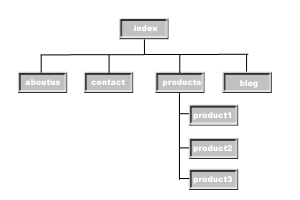Organizing Blog Content Will Benefit Your Visitors & You!
1 Its never too late to organize blog content into a format that makes it easier for people to find the information they are looking for. But clearly the best time to do it is as soon as you start posting on a new blog.
Its never too late to organize blog content into a format that makes it easier for people to find the information they are looking for. But clearly the best time to do it is as soon as you start posting on a new blog.
Its a few years since I wrote my very first blog and I have to admit I really didn’t know that much about what a blog actually was; never mind how to organize it. I began to realise that it probably wasn’t that well done when people started to leave comments like ‘what a wonderful collection of rambling thoughts’. On one hand, this comment was quite flattering but on the other it was a clear indicator that I was not focused on specific subjects and had not given my blog any structure or a format that people could understand or follow easily.
Now I am not saying that if you want to write about a diverse range of different topics that you shouldn’t, but what you do have to do is organize those subjects in a way that it is relatively easy to follow. Likewise if you do want to focus on a specific topic, whatever it may be, then it is probably a good idea to sit down and work out what categories you want to write about and then use those categories to drive your post topics.
Some good rules of thumb:
- try to stick to one subject in a single post i.e. one that fits neatly into a page, one of your categories or a sub category
- use the title to tell people what they are going to be reading about specifically
- utilise where possible parent categories and sub categories of the parent
- Try to avoid generic or miscellaneous categories such as ‘uncategorized’, if its worth writing about its worth giving it a category
- If a topic is so out of the scope of your blog then consider seriously whether it should be included, confusing your audience probably isn’t helpful
The reasons behind these rules of thumb all relate primarily to one thing ‘navigation’, your keywords bring you traffic and an audience, but if they arrive on your blog and cannot follow the structure or find the information they are looking for, then there is a good chance they will just leave again. The same applies if they land on a post they really like and decide to explore further but can’t really see a way of discovering further topics of interest.
Of course the ‘search’ feature is a must have option that gives your visitor an alternative to using your navigation system, but if they enter the wrong terminology or search terms they may not get the results they were looking for, when actually it is quite possibly there but called something else. So yes always use the search option but never rely on it entirely as a navigation method.
 Hierarchical structures tend to work the best, people are used to that way of having information presented to them and tend to follow the navigation intuitively when this method is used.
Hierarchical structures tend to work the best, people are used to that way of having information presented to them and tend to follow the navigation intuitively when this method is used.
If you have already posted a number of articles then just take some time out, work out a navigation system and go through your list of posts to organize them. Don’t forget that if you have created a bit of a muddle its not too late to fix it. You can split the posts to break out the multiple topics save the edited posts and use the information you have removed to make new posts that fit your categories. You can also add new pages where appropriate; it might take a little time but it will be well worth the effort.
So in summary give your blog a subject matter, try and make sure that the posts fall under that subject matter and categorize your posts so that visitors can find the information they are looking for. Organizing blog content is important and visitors to your blog will appreciate it if you make the effort.
Don’t forget to include the sitemap as well.
.-= Essential Freelancing Resources´s last blog ..Make Freelancers Your Ally =-.